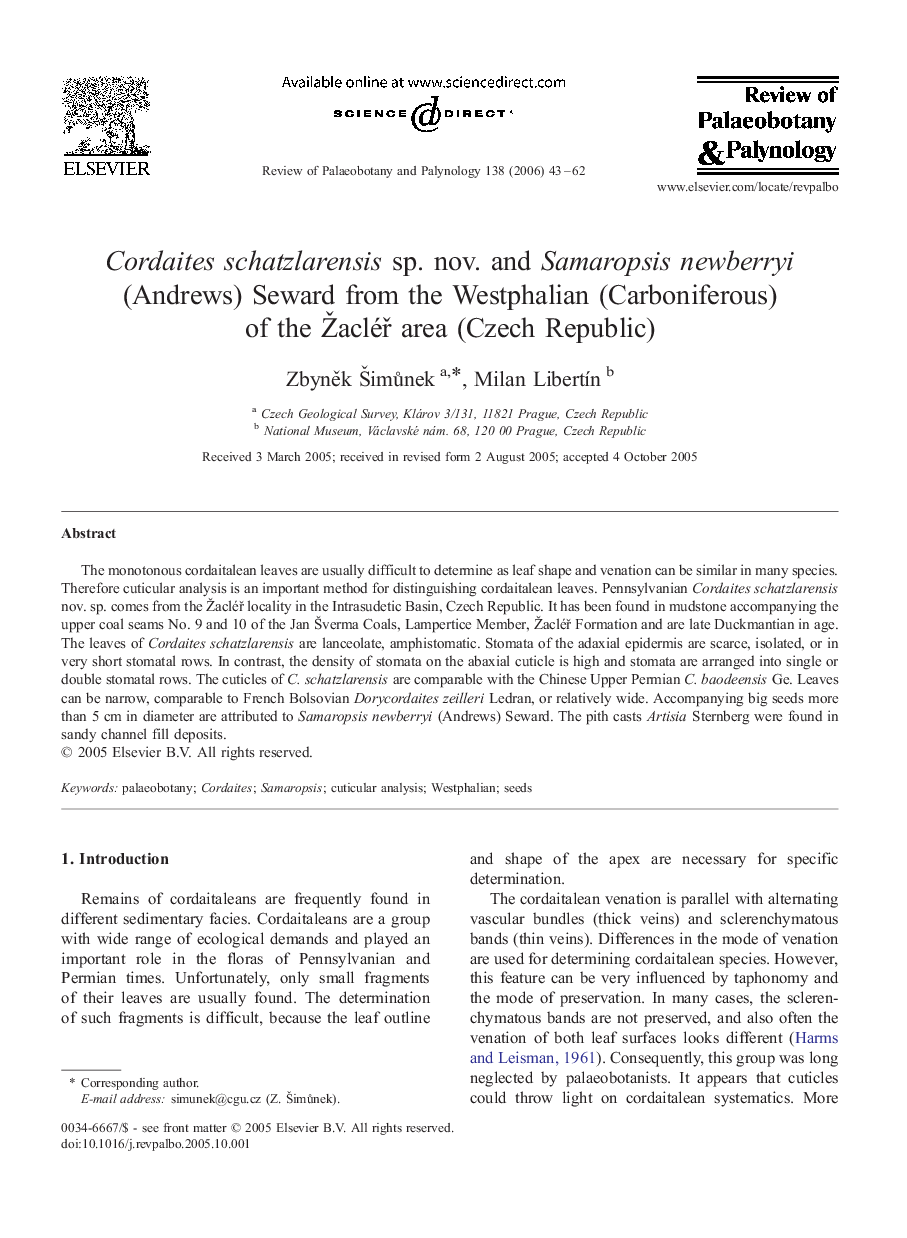| Article ID | Journal | Published Year | Pages | File Type |
|---|---|---|---|---|
| 4751279 | Review of Palaeobotany and Palynology | 2006 | 20 Pages |
The monotonous cordaitalean leaves are usually difficult to determine as leaf shape and venation can be similar in many species. Therefore cuticular analysis is an important method for distinguishing cordaitalean leaves. Pennsylvanian Cordaites schatzlarensis nov. sp. comes from the Žacléř locality in the Intrasudetic Basin, Czech Republic. It has been found in mudstone accompanying the upper coal seams No. 9 and 10 of the Jan Šverma Coals, Lampertice Member, Žacléř Formation and are late Duckmantian in age. The leaves of Cordaites schatzlarensis are lanceolate, amphistomatic. Stomata of the adaxial epidermis are scarce, isolated, or in very short stomatal rows. In contrast, the density of stomata on the abaxial cuticle is high and stomata are arranged into single or double stomatal rows. The cuticles of C. schatzlarensis are comparable with the Chinese Upper Permian C. baodeensis Ge. Leaves can be narrow, comparable to French Bolsovian Dorycordaites zeilleri Ledran, or relatively wide. Accompanying big seeds more than 5 cm in diameter are attributed to Samaropsis newberryi (Andrews) Seward. The pith casts Artisia Sternberg were found in sandy channel fill deposits.
